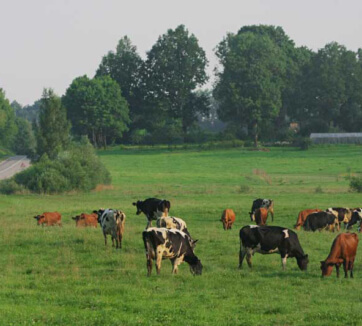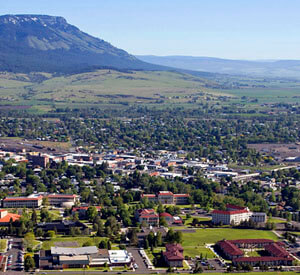No to SB 432 and SB 644
Help save Oregon’s land use planning. Say ‘NO’ to SB 432 and SB 644
We need your help today to stop a bill that threatens the core of Oregon’s land use program. SB 432 would remove  Oregon’s land use planning protections from eastern Oregon. The bill is extremely destructive and will imperil the future of the land use system statewide SB 644 would allow strip-mining on farmland in the same region without any land use review.
Oregon’s land use planning protections from eastern Oregon. The bill is extremely destructive and will imperil the future of the land use system statewide SB 644 would allow strip-mining on farmland in the same region without any land use review.
Please contact Senate President Peter Courtney and Sen. Majority Leader Sen. Ginny Burdick today. Ask them to say “no” to SB 432. and SB 644 Bills are moving fast – so please act today!
We are grateful that our own Sen. Chuck Thomsen opposes the bill–thank you!
Here is our letter in opposition to the two bills.
We strongly oppose SB 432 and so do League of Women Voters, Oregon League of Conservation Voters, Oregon Chapter of the American Planning Association , 1000 Friends of Oregon, Central Oregon Land Watch, Oregon Land and Water Alliance, Oregon Coast Alliance, and the Oregon Conservation Network.
SB 432 removes eight Eastern Oregon counties from Oregon’s statewide land use system. While Wheeler, Sherman, Gilliam, Wallowa, Harney, Grant, Baker and Malheur counties have not enjoyed the same robust economic and population growth as we’ve had in Hood River, the statewide land use system isn’t to blame. Businesses and people are making the choice not to relocate to these counties for a host of reasons unrelated to our land use system. And in fact, Oregon’s land use system enhances these counties’ most important industry—agriculture. There are real things the legislature can do to improve the economy and vibrancy of Eastern Oregon counties. They should spend their time and our public money addressing real problems and providing real solutions.
Here’s what’s wrong with SB 432:
- There is no evidence that there is a lack of land available for development in Eastern Oregon. The bill is based on the false premise that making more land available for development would automatically mean greater economic development for Eastern Oregon. This is simply not true. Instead, it would make it easier for ranchland to be divided and developed, making agricultural jobs disappear. In fact, there is plenty of cheaply priced land in these counties right now that is zoned for industrial, commercial and residential use.
- Agriculture is the economic engine of these counties. Oregon’s land use system, including the property tax benefits we give to working lands, helps support the viability of farming, the largest industry in terms of economic output in all these rural counties. Oregon’s agricultural economy is one of the strongest in the country, due in part because of our statewide planning goals that protect agricultural lands and the regulations that make it easier to farm. #1 agricultural product in Oregon is cattle and calves, which are largely produced in eastern Oregon. Of Oregon‘s top 20 agricultural products, many are grown primarily in eastern Oregon, including hay, wheat, potatoes, onions, and mint. SB 432 puts at risk the land base needed for the leading industry in these counties
- Our land use system helps rural local governments stay solvent. One of the key tenets of Oregon’s land use goals is to encourage compact, cost-efficient development. Dispersed development is much more expensive for cash-strapped local governments which are forced to maintain far-flung infrastructure (roads, water and sewer lines) and services (fire, police and schools).
- Local communities already have a lot of control over their land use rules. While counties and cities must adopt land use regulations that are consistent with Oregon’s 19 Statewide Planning Goals, these are broad provisions. Each local government already customizes their Comprehensive Plan to their local community and its needs and they already have the ability to amend their plans as their needs change. Just like you’d expect, Malheur County’s rules are very different from Multnomah’s. Each county already customizes land use to their own situation.
- There are more effective solutions for growing and diversifying the eastern Oregon economy. Why doesn’t the legislature invest in value-added production; research & development of new products; growing local businesses related to the region’s assets, such as recreation and tourism; and investing in diverse types of infrastructure, including roads, high-speed internet service, and improved air access? Let’s try something that really will lead to economic development.
What the bill is really about:
Since there is no evidence that Oregon’s land use program has hurt growth in these counties, nor evidence that removing the state land use program will spur growth in any way, you’ve got to ask “what is the purpose of the bill?”
the state land use program will spur growth in any way, you’ve got to ask “what is the purpose of the bill?”
This legislation is just one more attempt to dismantle the statewide land use system entirely. When direct efforts—like Measures 10, 7 and 37—have failed, opponents of land use planning have decided to take an incremental approach, and dismantle it piece-by-piece, starting in Eastern Oregon.
The bill’s chief sponsor and Sen. Minority leader, Sen. Ted Ferrioli, has been a fierce critic of Oregon’s land use program for years. This year it seems he hopes that he can achieve gutting our land use system in exchange for other legislation. We trust no one will make that deal of trading away Oregon’s heritage of our land use system, anymore than we would trade the Beach Bill, the Bottle Bill, or the Columbia River Gorge National Scenic Area.
Please tell our legislators that this is a terrible bill and that they should reject it.
If you’ve got any questions, send them my way heather@hrvrc.org or 541-490-5225.
Thanks,
Heather Staten
Executive Director
Hood River Valley Residents Committee